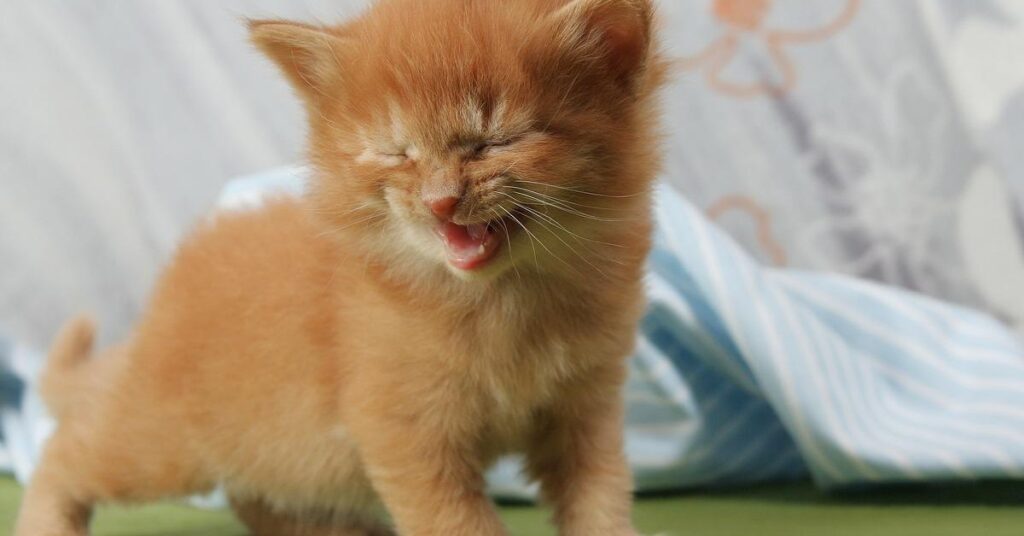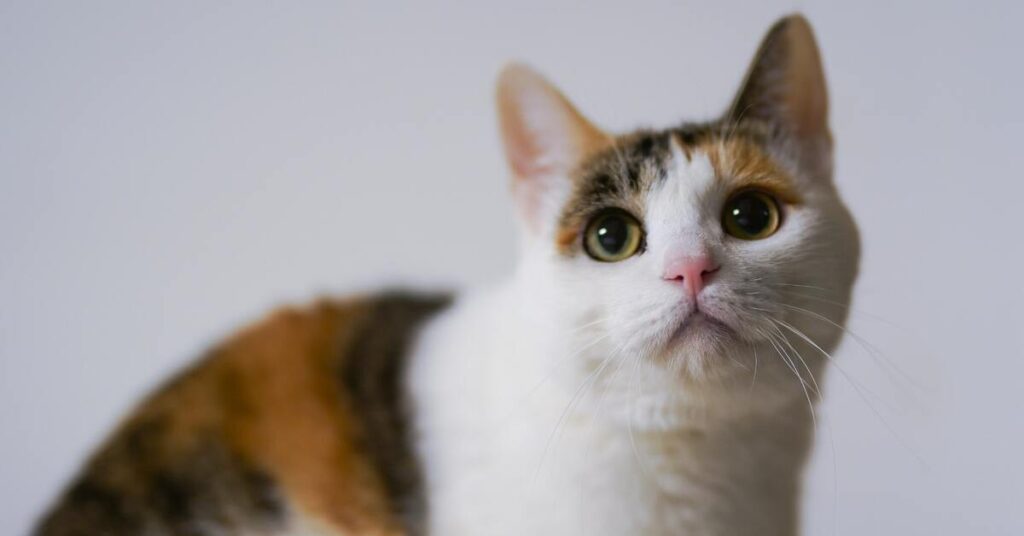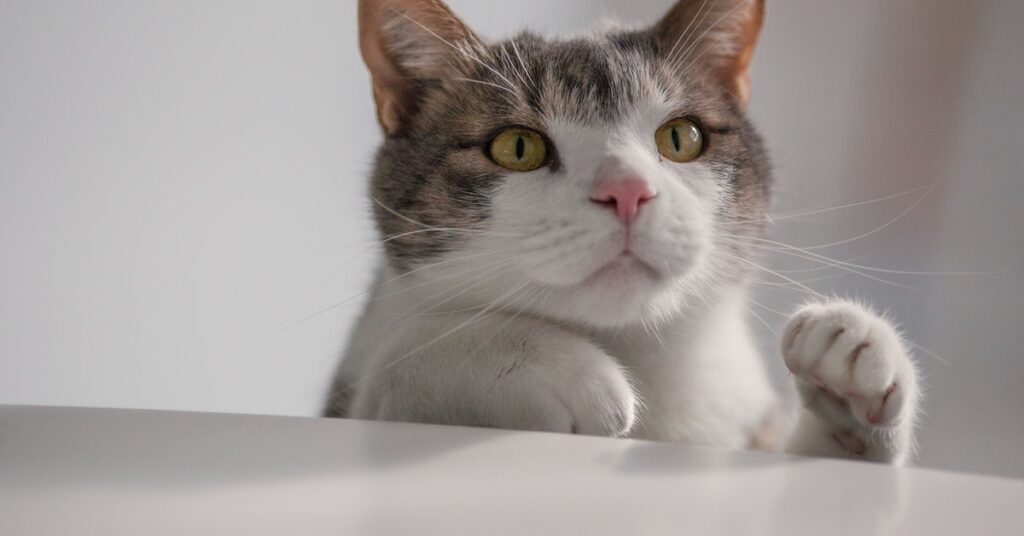Among the many telltale signs of a healthy cat is the purring and kneading. Good health also leads to confidence, and a healthy cat will be more sociable and confident. Cats with healthy gums and coats will also be more outgoing.
Body language
Cat body language is a great indicator of how a cat is feeling. For example, a cat in a happy mood will have a soft face and a relaxed expression. A cat that is excited or fearful will have its pupils dilated. When observing a cat’s body language, it’s important to remember its context, including how it stands and moves. For example, a happy cat will have its ears forward and its whiskers slightly forward. A relaxed cat will also curl up into a ball on your lap or sit on its side.
A happy cat is also a healthy cat. A healthy cat will behave like any other cat – it will eat, drink, go to the toilet, and sleep regularly. When you notice these behaviors, you can determine if your cat is happy. A happy cat will also move around and respond to sounds.
A happy cat will rub against people and follow you around. It will rub against your leg or head and will be friendly and affectionate. It will play with objects and toys. It may even head bump you when you give it special attention. A happy cat will also be vocal when you’re around, and it will drool when you pet it.
Another sign of a happy cat is its ability to show off its belly. It will display a straight tail, a tail hook, and a tail vibration. These are classic signs of a happy cat, and they will be more approachable than a cat that is sad.
Read more about Why is My Cat So Hyper?
Changes in everyday behaviors
When a cat is healthy, it will exhibit different behaviors than a stressed or frightened cat. It should eat, drink, go to the litter box, and sleep regularly. It will also express its happiness through body language. A relaxed cat will wag its tail gently but not ‘thrash’ or ‘thump’. It will also look relaxed and may appear uninterested in his surroundings.
For more information on cat behavior, subscribe to the Companion Animal Psychology blog. This blog provides the latest scientific research and evidence-based advice for cat owners. It also contains affiliate links, meaning if you make a purchase through the links in the articles, the blog earns a commission.
A healthy cat must exercise regularly to provide mental and physical stimulation. It is proven that animals that don’t get enough physical activity are more likely to develop behavioral problems. Insufficient exercise can lead to destructive behavior and hyperactivity. Cats that do not receive adequate physical activity may scratch furniture or chew floors, or exhibit other undesirable behaviors.
If your cat is fearful or nervous, it won’t move around freely. On the other hand, a relaxed cat will explore your house and watch you. It may even sit on a cat tree and observe you.
Read more about Why Your Cat Doesn’t Like You
Good appetite
Having a healthy appetite in cats is a sign that your cat is happy and healthy. If your cat becomes sluggish or starts to overeat, it may be suffering from emotional or physical issues. To ensure your cat’s health, it’s a good idea to visit the vet regularly.
While many cats have fantastic appetites, this characteristic can lead to overeating, which may be a sign of stress, boredom, or unhappiness. The key is to identify what triggers this behavior and treat it accordingly. Overeating is a serious problem, since it can lead to many serious health conditions. Also, remember that cats do not play when they are depressed or anxious. Keeping your cat active and alert while he or she is not playing can make your cat feel better.
Cats can also become picky eaters if they are experiencing a loss of appetite. This can be caused by an infection, an intestinal disorder, or a cancer. A lack of appetite that lasts for more than twelve hours may be a sign of a serious health problem, and it is imperative to seek veterinary care as soon as possible. A veterinarian can prescribe medication to increase your cat’s appetite. There are natural remedies available that are effective in stimulating a cat’s appetite.
A healthy cat needs to be fed a high-quality diet that’s rich in protein and contains very few grains. The food should also be free of fillers. Some cat parents feed their pets a combination of dry and wet food, while others only provide wet food. Either way, make sure your cat is receiving a high-quality diet, and it will be healthier and happier in the long run.
Read more about 5 Ways to Make Your Cat Happy
Chirruping
A chirping cat may be greeting you, trying to catch your attention, or just trying to be heard. Cats often chirp to mimic the sounds of birds. Some cats chirp while barely opening their mouth, while others chatter openly.
Your cat may also chirp when it’s excited or about to hunt. This is a normal behavior and a sign of an active cat. Try to incorporate interactive play into your cat’s routine to encourage this behavior. Buy lure and wand toys, move your cat’s bed near a window, and challenge your cat with foraging toys and puzzles.
A chirping cat is a happy cat. This natural sound is produced by the air flowing over the larynx when your cat breathes. It usually signals contentment, but it can also indicate nervousness. A chirping cat will make this noise when it is content, but it can also be a sign of anxiety.
Some cats will chirp when they greet you. This kind of behavior usually doesn’t happen along with other behaviors. In general, chirping is associated with happy hello vocalizations and general excitement. According to the International Cat Care Organization, there are three types of vocalizations used by cats. The chirping sound falls under murmuring, and is typically done with the mouth closed.
The chirping sound is a common form of communication between cats. Like the meow, the chirping sounds may be directed at small animals such as squirrels or chipmunks. Cat behaviorists explain that the chirping sound is a response to something in the environment.
Read more about 11 Best Eco Friendly Cat Litter for Your Cats
Relaxed facial expression
The relaxed facial expression of a healthy cat is one of the best ways to tell if it’s in a happy mood. It shows an interest in its surroundings and appears interested in the people around it. It may also act as a “supervisor” by watching from a distance. In addition to displaying a relaxed facial expression, a happy cat will often have an up-right tail. In addition, a happy cat will have a natural curiosity and enjoy playtime.
The relaxed facial expression of a healthy cat is one of the easiest ways to tell if it’s happy. Look for the cat’s tail to be erect and its ears forward. It may also crinkle its tail. A relaxed cat is likely to be content with its life and will show you affection by rubbing up against you.
One study suggests that the relaxed facial expression of a healthy cat is not only the result of an increased sense of well-being, but a positive mood. Cats’ faces are hard to read and some people are able to read their cats’ facial expressions. However, most people can’t read a cat’s face. Scientists know that our faces are a vital part of judging how we feel. A recent study of mice showed that when they’re experiencing pain, they make grimaces.
A relaxed cat is one that is free of stress and anxiety. It will eat and drink normally, go to the bathroom regularly, and sleep regularly. A relaxed cat will have the same facial expression, and may also sit on one side with its paws underneath its body. It will also have its ears pointed upward and may look slightly closed. Moreover, a relaxed cat will never seem to be intent, even if its eyes are closed half-way.
Read more about 15 Best Cat Carrier, You Must Have One
Tail expression
A healthy cat has a straight up tail and alert eyes. It will also wave its tail back and forth when interacting with you. A happy cat will also be curious and playful. You can foster this curiosity by providing a cat with toys and opportunities to play. Your cat will be happy if it feels that you’re paying attention to it.
If your cat rubs against your legs, you should know that he is happy. He or she is displaying his or her affection and love for you. A happy cat will try to negotiate its way onto your lap. It may also display its stomach for petting. A happy cat may also extend its claws and ask you to feed it. Since cats are obligate carnivores, they will not hesitate to ask you for a piece of meat or a treat.
A cat with an up-curved tail is happy and inviting. If the tail is puffed and sagging, it is depressed or stressed. It may be playing with a dangly feather toy, or he may be gauging your stress level.
A happy cat has a soft tail. A cat with a soft tail will be less stressed and will move its tail slowly from side to side. A soft, wagging tail is a sign that the cat is not in a stressful or aggressive situation. You can tell whether or not your cat is happy by studying its body language and vocalisations.
Read more about 9 Best Blankets for Cats and Dogs, You Must Try Some








